Selling Cold Process Soap
by Kim of Pepo Park
Didn’t see Part 1 of this series? Click here to bone up before you read Part 2.
Congrats! The soaping bug has bitten and you want to spread your love for cold process soap.
Before you sell your soap, you should take some time to make sure you know as much as you can about what you’re selling. Cold process soap can suffer from some quality issues so you shouldn’t rush to get it to market until you know all about your soap.
Scent and color: Over time, the scent or color of your soap may change. Generally, this is not a big deal but you should know how your soap changes over time so that you can warn your customers. For example, citrus essential oils don’t “stick” very well and may fade out. When my customers buy a citrus-scented soap, I let them know that the scent may fade but the soap will still be fine to use. Colors may intensify, fade or morph. Botanicals tend to turn black either immediately or over time. The one exception I’ve found are calendula petals.
Hardness: How does your soap do if it’s stored in a wet soap dish? Check it out. If it gets soft and gooey, let your customers know how to store it so that it doesn’t turn to goo. Is your soap softer than average because you’ve loaded it up with luscious oils?
For scent, color and hardness issues, ensuring your customers are informed about how natural soap can act will keep them happy with your product. People don’t like surprises.
Freshness: Sometimes, soap will do bad things like get moldy or develop Dreaded Orange Spots (DOS) if it goes rancid. You don’t want to sell any soap that is or will go moldy or rancid. Soap can go moldy if you add too many botanicals or they’re too fresh. For example, if you like to add fruit to your soap, but use too much. It’s best to use dried material ensuring that they’re completely dried out. Fruit powder can be substituted for fresh fruit. Soap can develop DOS if you over superfat and not enough oils are saponified. In the case of superfatting, a lye calculator is always your friend. Keep the superfat level at 5-6% and consider adding Rosemary Oil Extract (ROE) if you superfat over 5% to help prevent rancidity. Old oils and oils with a short shelf life like soybean and hemp may cause DOS to appear faster so also check the age and the shelf life of the oils you are using.
Randomness: Sometimes, a batch will be bad for no obvious reason, even with tried and true recipes. Here’s a picture of a batch I made with odd patches of I don’t know what. I tested the pH and it was fine, but I didn’t sell it because I couldn’t predict how or if these patches would affect customers down the road.
Labeling: As mentioned in Part One, true soap doesn’t require an ingredient label. Your soap is true soap if it is made of fats and an alkali (lye). And, that’s cold process soap! However, other information may be required by law (product weight and contact information) or desired by your customers (scent). It may be the only chance you have to communicate with your buyer. There is a great book called Soap and Cosmetic Labeling that will help you make sense of all of the rules. You can also read this page on the FDA site. If you decide that your soap is true soap, your customers will appreciate you listing the ingredients even if it’s not required.
In Part One, I talked about general issues like labels and packaging. Part Three will discuss issues specific to selling melt and pour soap.
Written by: Kim Wilton of Pepo Park.

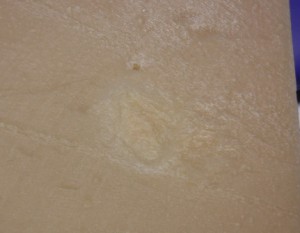

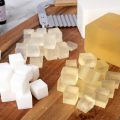
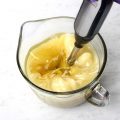
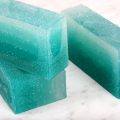
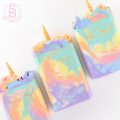
I am so thankful for this information, but wondering how it would apply to bath bombs? What type of labeling is required and where would I find it? Thanks!
Hi Jodi!
When you are labeling your bath bombs, you are going to label them as a cosmetic. Here is a great guide to how to label them (it’s lotion, but the rules are the same):
http://www.soapqueen.com/bath-and-body-tutorials/lotion/how-to-label-lotion/
I hope this helps! 🙂
-Becky with Bramble Berry
I can’t stress enough your point about knowing your product. I’ve seen so many people start selling their soaps after making two or three batches. They have no idea how their product will hold up over time, if anything “weird” will happen 6- 9 or 12 months after making.
Great point! Knowledge is power =)
Courtney from Bramble Berry
I LOVE ALL THE GREAT ADVISE! So many things I hadn’t even thought of, I really appreciate it. I’m with Claudia, can’t wait for the 3rd one. Please keep these type of postings coming for all of us newbies! Love to see posts on the different oils, what is recommended what we should stay away from etc.
Great post, Kim!
Great post! If you are a Canadian soaper, however, you must label with the ingredients, because it is considered a cosmetic here.
GREAT POST KIM!!!!!!
I love it. Please, post part 3 asap. I can´t wait for it!
Bestr regards.
Claudia E
Monterrey, México